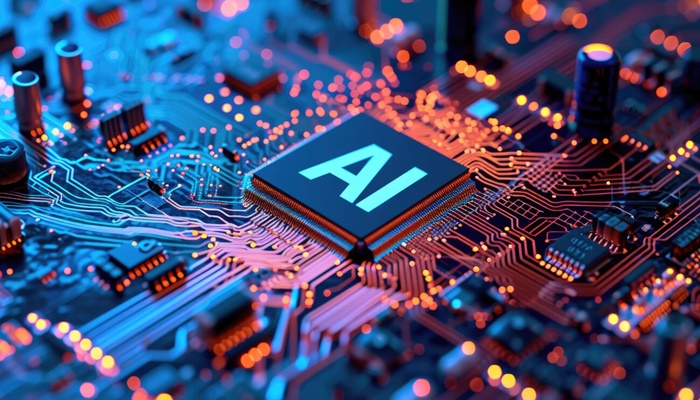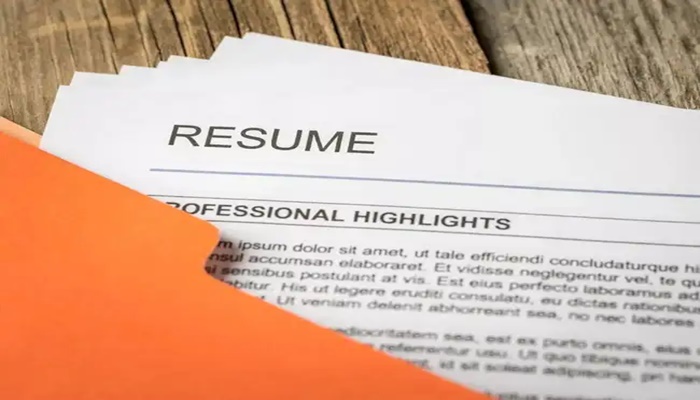From Silicon Valley to India, thousands of workers are being let go as firms cite automation, efficiency, and strategic pivots to artificial intelligence. Microsoft, Amazon, and education firm Chegg are among those slashing roles, even as they invest heavily in AI initiatives. Industry leaders claim the painful cuts will help “streamline operations” and free up resources for AI-powered growth, though the moves have left many employees stunned.
Microsoft’s Biggest Cut Since 2023 Targets 6,000 Jobs
Microsoft kicked off the latest round of cuts on May 13, announcing it would lay off approximately 6,000 employees – nearly 3% of its global workforce. The layoffs span “all levels” and geographies of Microsoft’s business, even touching its LinkedIn subsidiary. Notably, Microsoft’s own Director of AI was among those laid off, a paradoxical twist given the company’s aggressive push into artificial intelligence. “We continue to implement organizational changes necessary to best position the company for success in a dynamic marketplace,” a Microsoft spokesperson said in a statement about the restructuring. The company indicated the cuts will reduce management layers and routine roles so it can stay “competitive and agile” while it “rapidly integrates AI” across products.
Microsoft’s latest layoffs are its largest since early 2023, when it cut 10,000 jobs (5% of staff) after pandemic-era expansions. CEO Satya Nadella recently noted the firm must exercise caution amid economic uncertainty, even as demand grows for AI offerings like its GPT-4-powered Copilot. Insiders say Microsoft aims to automate more routine tasks with AI, “freeing up employees to focus on higher-value work” – echoing a broader industry trend of using generative AI to boost productivity.
Amazon and Google Make Targeted Cuts for Efficiency
Another Big Tech player, Amazon, also trimmed headcount, though on a smaller scale. On May 14, Amazon eliminated about 100 jobs in its Devices and Services unit – the division behind Alexa voice assistants, Kindle, and other consumer gadgets. The e-commerce giant said the step was part of “ongoing work to make our teams and programs operate more efficiently” and to align with its product roadmap. A company spokesperson described the decision as a “difficult” but necessary move to streamline operations. Amazon’s cutbacks come as it refocuses on profitable segments and integrates more automation into areas like its smart devices and retail operations. The relatively small number of roles eliminated suggests a targeted restructuring rather than a broad workforce reduction.
Google likewise made quiet layoffs earlier in May, cutting roughly 200 jobs (about 0.3% of its staff) in its global business (sales and partnerships) unit. The company said it was making “a small number of changes” to teams to “expand our ability to quickly and effectively serve our customers”. Reports indicated that resources were being redeployed toward Google’s AI products and cloud services as revenue priorities shift. In fact, one report noted Google’s “money flows to AI”, suggesting that investments in AI initiatives are being funded by trimming roles in traditional divisions. Google has been racing to integrate generative AI across its product lines – from search to productivity apps – intensifying since the launch of OpenAI’s ChatGPT. The recent cuts, though modest in scale, underscore how even well-performing tech giants are recalibrating their human workforce in the AI era.
Chegg Feels the Heat from ChatGPT in Education
One of the most stark examples of AI disruption is playing out in the education technology sector. Chegg, a US-based online learning and tutoring company, announced on May 13 that it will lay off about 22% of its workforce – eliminating 248 jobs – after warning that free AI study tools are siphoning off its users. “Students [are] increasingly turn[ing] to AI-powered tools such as ChatGPT over traditional edtech platforms,” Chegg said, directly blaming the rise of ChatGPT and similar AI services for a steep drop in its customer traffic. The impact on Chegg’s business has been dramatic: in the first quarter, its number of subscribers plunged 31% and revenue fell 30%. Chegg’s stock price had already plummeted in 2024 when the company first acknowledged that OpenAI’s chatbot posed a major competitive threat.
As part of its response, Chegg is not only cutting jobs but also shutting its offices in the U.S. and Canada by year’s end to save costs. The firm said it expects to save up to $110 million over the next two years from these cuts and closures. Chegg’s CEO Dan Rosensweig has tried to pivot by launching Chegg’s own GPT-4 powered study aid, but so far it hasn’t stemmed the losses. The company even sued Google in February, alleging that Google’s AI-generated search snippets are “eroding demand for original content” on the web and undermining services like Chegg’s. The drastic 22% workforce reduction shows how AI-driven disruption can upend an entire business model virtually overnight. One industry analyst noted: “A.I. can kill your business overnight. Just ask the CEO of Chegg”.
Cybersecurity and Dating Apps Also Slash Roles
The layoff wave extends beyond Big Tech and edtech. In the first half of May, companies in sectors from cybersecurity to online dating also announced cuts – in many cases citing the need to boost efficiency, margins, or automation:
- CrowdStrike, a major cybersecurity firm, said on May 7 it will cut about 500 jobs (roughly 5% of its workforce). CEO George Kurtz explained that “while we will continue to prudently hire, primarily in customer-facing and product engineering roles, we are reducing roles in some areas of the business”. In other words, CrowdStrike will keep investing in key engineers and sales staff, but trim peripheral and support functions to streamline operations amid pressure to meet “ambitious revenue targets”. The Texas-based company expects to incur up to $53 million in charges for severance and restructuring costs.
- Match Group, the parent of dating apps Tinder and Hinge, announced a 13% workforce reduction (about 325 employees) as it seeks to reduce expenses and reorganize. New CEO Spencer Rascoff, who took the helm in early 2025, has halted hiring for now and aims to unify the company’s brands that previously operated semi-independently. The layoffs will help Match “operate as one company, not [distinct] brands,” Rascoff was quoted as saying. This consolidation comes as growth in the online dating market has cooled. (Notably, Match’s downsizing was announced just after Q1 earnings, where it reported a dip in paying users.)
- Smaller tech firms are not spared either. Vancouver-based General Fusion (a clean-energy startup backed by Jeff Bezos) suddenly fired 25% of staff in May, and Israeli AI-security startup Deep Instinct cut 10% in its second layoff round in two years. In the UK, climate-tech startup Beam collapsed entirely, resulting in 200 job losses. These cases highlight that beyond the headline-grabbing names, countless startups are also tightening belts, especially in emerging tech fields where funding has grown cautious.
Industry-wide, the toll is mounting. In 2025 so far, more than 22,000 tech jobs have been cut globally, on top of the 150,000 tech layoffs recorded in 2024’s downturn. Analysts say this ongoing shake-up “underlines the deepening impact of restructuring, automation, and AI adoption across the tech sector.” Even companies that aren’t explicitly blaming AI are finding they must do more with fewer people – often by leveraging new software tools.
Employees React: “You’re Not Alone – We Are 6,000”
For employees caught in the upheaval, the cuts have been devastating. Some have taken to social media to share their experiences and rally support. Gabriela de Queiroz, the Microsoft AI director laid off this week, posted a “bittersweet” farewell message on X (Twitter) that went viral. “I’m an optimist at heart. That hasn’t changed,” she wrote, sharing a photo of herself smiling on her last day. Queiroz described how staff were informed and then “asked to stop work immediately and set an out-of-office”—a jarring end to their time at the company. Instead of quietly disappearing, she chose to stay a little longer that day to attend meetings and say goodbye to colleagues.
“To those also affected — you’re not alone. We are at least 6,000,” Queiroz tweeted, referring to the size of Microsoft’s layoff pool. “To those who’ve reached out, thank you. Your kindness means everything right now,” she added. Her courageous and empathetic message struck a chord, garnering hundreds of supportive replies. Many in the tech community expressed shock that an AI leader could be let go at the very moment Microsoft is touting AI as its future. One engineer on X wrote that it “makes no sense… a company that has ballyhooed AI… then fires the director of AI”, calling the decision “despicable”. Another quipped, “Did the AI start directing itself?”.
At Chegg, employees braced for cuts amid sinking morale as the company’s prospects dimmed. While most affected Chegg workers have not spoken publicly, the general sentiment in Silicon Valley is one of uncertainty. “AI is eating our jobs, not just our homework,” a commenter on a popular tech forum wrote, reacting to Chegg’s news. And at Amazon, where layoffs have been smaller and continuous since last year, employees have described a mix of anxiety and pragmatism. “No one’s safe from automation, whether you’re a warehouse associate or a tech VP,” a post on the anonymous workplace app Blind read, capturing the grim mood.
India’s Tech Workforce Braces for AI Impact
Though many of the recent layoff announcements are by U.S. companies, India’s tech sector is deeply entangled in this global trend. Microsoft and Amazon, for instance, have large operations in India – employing tens of thousands of professionals – and some roles in India are reportedly among those trimmed in the latest cuts. (Microsoft’s inclusion of certain LinkedIn offices likely implicates its Bengaluru hub, though exact local numbers haven’t been disclosed.) Each wave of multinational tech layoffs inevitably reverberates in India, which serves as a talent base for many global firms. Indian employees of these companies have shared on LinkedIn how projects were abruptly shut down or teams thinned out as priorities shift toward AI-driven products.
Meanwhile, Indian companies themselves are adopting automation at a rapid pace. Tata Consultancy Services (TCS), India’s largest IT services provider, has openly warned that generative AI will transform back-office and customer support roles. TCS CEO K. Krithivasan said in a recent interview that the need for traditional call center agents could become “minimal” within just a year, as AI chatbots take over many functions currently performed by humans. “The technology should be able to predict a call coming and proactively address the customer’s pain point,” he explained, envisioning AI handling queries by analyzing customer data. This is a sobering forecast for India’s massive business-process outsourcing (BPO) industry – which employs over 5 million people – many in call centers. If routine customer service inquiries are increasingly handled by AI, the implications for Indian employment are huge.
Indian startup founders are likewise balancing efficiency with headcount. In April, used-car platform Cars24 and insurtech startup Zopper laid off 200 and 100 employees respectively amid restructuring. While those cuts were attributed to financial pressures, many Indian startups are also exploring AI to automate tasks in marketing, support, and even coding. A World Economic Forum survey found that 41% of global employers expect to reduce staff in the next five years due to AI advancements, and India’s cost-sensitive firms are no exception. N. Chandrasekaran, chairman of Tata Sons, has acknowledged that AI will inevitably lead to some job losses even as it creates new opportunities, urging a focus on reskilling workers for “jobs of the future.”
Balancing Efficiency and Humanity in the AI Era
The rapid adoption of AI is prompting an uncomfortable question across industries: Are we overestimating AI’s ability to replace human workers? Some evidence suggests caution. After trying an “AI-first” customer service strategy, Sweden’s fintech bank Klarna reversed course this year and started rehiring human agents, admitting the all-AI approach led to “lower quality results” in customer care. “It’s so critical that you are clear to your customer that there will always be a human if you want,” Klarna CEO Sebastian Siemiatkowski said, emphasizing that human empathy and judgment are still essential. Even among corporate leaders, there is realism about AI’s limits: a recent IBM survey of 2,000 CEOs found only 25% of AI initiatives have delivered the expected returns, and just 16% of AI projects have been successfully scaled company-wide.
Those caveats aside, the current trajectory in business is unmistakable. Automation and AI are now front and center in strategic planning, and companies are willing to make tough cuts to invest in these technologies. The surge of layoffs in May 2025 – from Microsoft’s 6,000 to Chegg’s 248 – illustrates how quickly the workforce calculus is shifting. For the employees left behind, there is the promise of new AI-powered tools to augment their jobs; for those laid off, it’s little consolation that a chatbot or algorithm might be doing their old tasks. As one tech worker remarked during a spirited online debate: “We always knew AI might change our work. We didn’t expect it to happen this fast.”




















